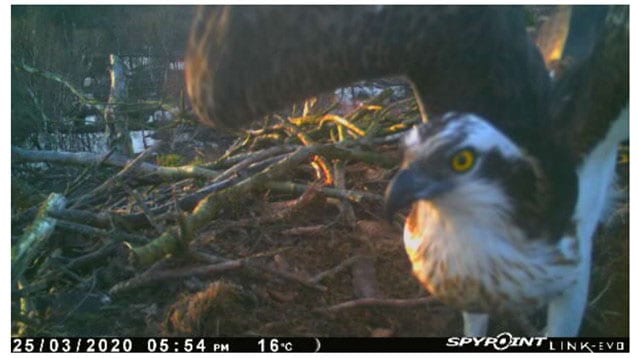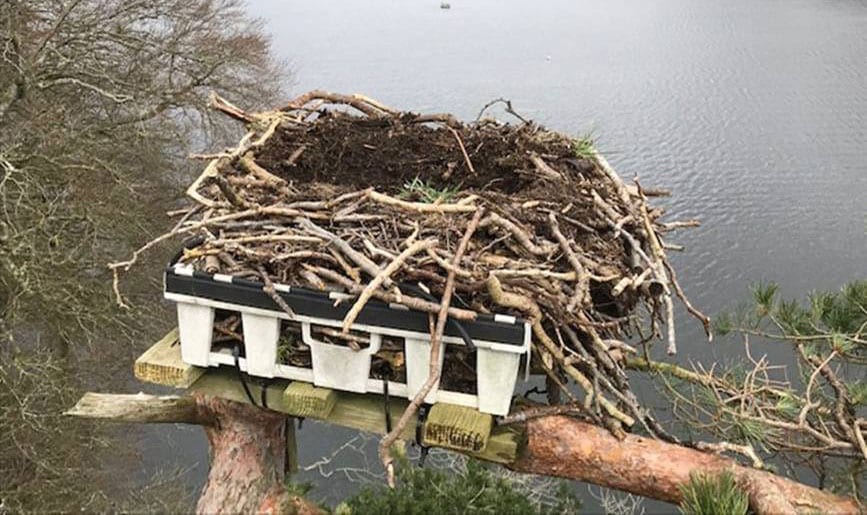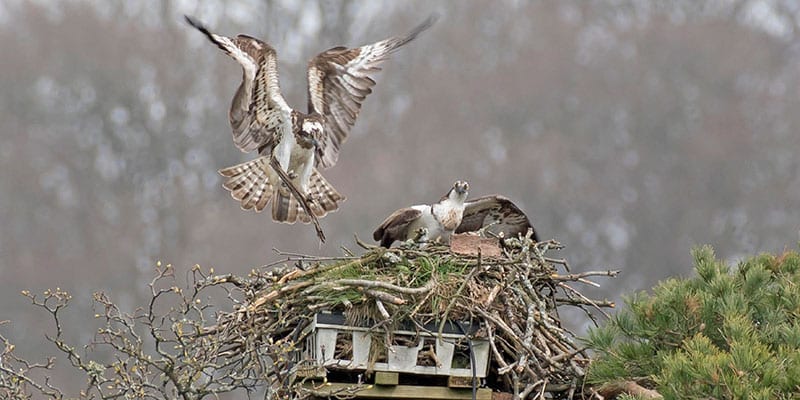Nature carries on

Mike Thornley
I’m sure, given the current climate due to the coronavirus crisis, there are those of us who feel trapped inside, caged even. But in the world outside, nature is carrying on and so is BASC’s osprey conservation project.
Being indoors has given me time to reflect and plan for future projects. One of the things I’ve been thinking about is the osprey project. This is something I’m immensely proud to be involved in.
A soaring success

Now in its third year, the osprey conservation project is a soaring success.
Thankfully, the foundations for this year’s part of the project had been laid before the world was plunged into chaos.
In March, the first ospreys arrived back in the north of England from their wintering grounds in West Africa. It was a remarkable 3,000 mile flight which brought them back for the new breeding season.
Driven to extinction
Driven to extinction through persecution in Victorian times, and absent from England for 150 years, they are making a comeback. We are pleased to be giving them a helping hand.
With a wingspan of 1.5 metres, ospreys are one of our largest birds of prey. They are the only kind that eats fish exclusively.
Nothing short of spectacular in flight, their long, angled wings show off white linings and a black patch near the wrist. They can sometimes be mistaken for a gull at a distance.
Earlier this year, a small BASC team spent time refurbishing, storm checking and building new osprey nests. These are specially constructed platforms high up in the trees, finished with sticks, moss and grass.
They imitate a natural osprey nest to give an instant attraction to this fabulous large iconic raptor. Most birds are site-faithful and if they return safely from their impressive journey, our nests are readily taken up.
Last year the osprey conservation project helped look after six nest sites. Our aim would be to see these increase by one or two each year.

BASC's osprey conservation project
The first osprey returning is always a highlight of my year.
This year as a whole is panning out differently because of the effects of Coronavirus. But the reappearance of the ospreys reminds us that nature goes on, and spring is upon us.
All our fingers are crossed for a high percentage of ospreys returning and another successful breeding season.
Unfortunately while live cameras are still rolling on a number of the nests, the footage at our key site will not be shown as the café that streams the footage is currently closed.
As the season progresses, I will update as best I can on the osprey conservation project via social media. I will also be providing information and facts on ospreys via these feeds. So, please give us a follow on Twitter here and a like on Facebook. Keep your eyes peeled.

Putting the ‘C’ in BASC
Raptors are a collection of the most fascinating birds you will ever see. They are among nature’s finest hunters and we have a duty to look after them as part of the British landscape.
BASC members can be proud to be a part of an organisation that not only has conservation in its title, but takes shooting’s obligation to protect and manage wildlife and habitats very seriously.
Working with various organisations, landowners and individuals we hope to make the return of the osprey to England a huge success.
Lift your eyes up to the skies
Once lockdown has been lifted and the Coronavirus crisis is behind us, if you get a chance to visit the north of England or one of the country’s known nesting sites then lift your eyes up to the skies.
As with any wildlife experience, patience is needed, but a quiet wait can be rewarded by the sight of an osprey fishing with talons outstretched or shepherding intruders away from their impressive nests.
